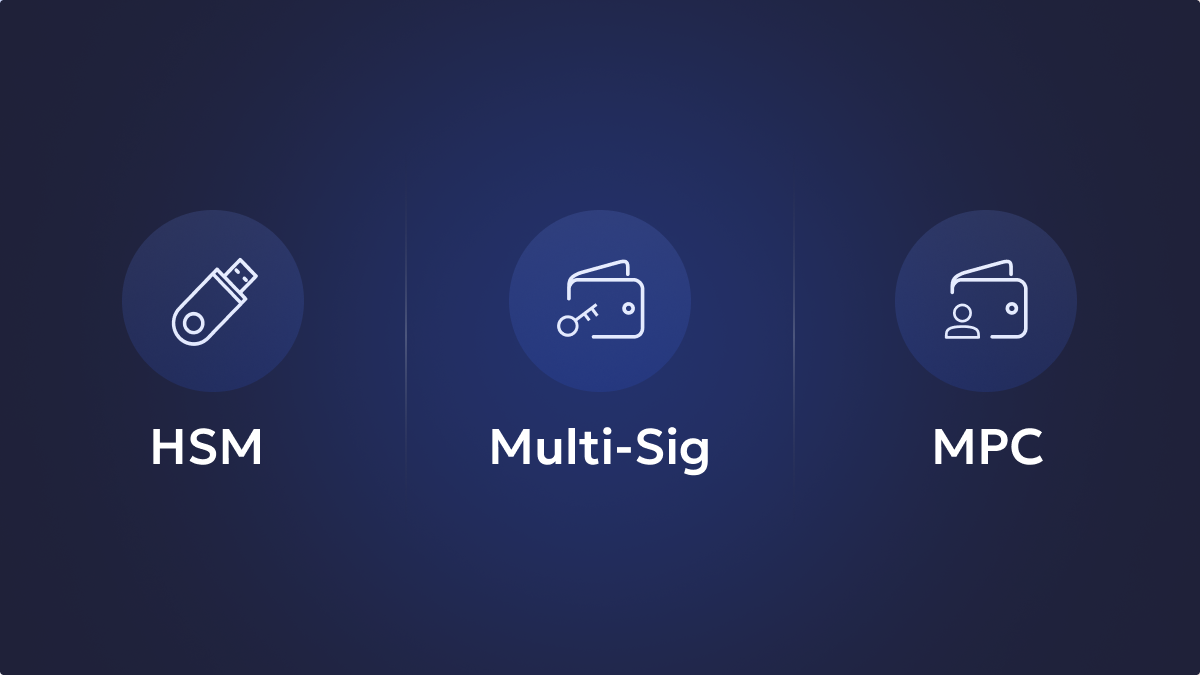The developments in the blockchain world are bringing several new networks, all offering innovative utility powered by robust developer communities. Users now enjoy more options than ever for their decentralized needs, with ecosystems across chains witnessing notable usage. As a result, the demand for tokens from various blockchains remains high.
Simultaneously, the services revolving around them are observing burgeoning usage too. Centralized entities like exchanges, market makers, fund managers, and other institutions are doing their best to meet these demands. In the process, they store, manage, and transact an array of assets originating from various blockchains and possessing different token standards.
Existing wallet solutions cannot catch up with all digital assets and provide a single interface for them. Institutions are, thus, forced to use multiple wallet infrastructures to meet the multi-chain service demands of their clients. While they must accommodate assets becoming fixtures in blockchain ecosystems, using fragmented wallet setups carries risks.
Unlock the potential of digital assets for your institution
Fragmented Multi-Chain Wallet Management
Using various wallet solutions requires institutions to rely on multiple wallet providers and securely maintain every channel. Essentially, they are now faced with several points of failure, and not securing even one can lead to cybercriminals wreaking havoc.
Crypto platforms and institutions offering exchange, trading, staking, and other services are entrusted by their users to securely manage their assets. The platforms implement complex storage solutions to implement safety for the multi-chain assets in their custody. They introduce different compartments to their storage and transactional frameworks, adding to the security of their platforms. The idea is to bring in redundancy between cold storage that houses the assets and the hot withdrawal wallets users interact with.
That way, users can still access instant liquidity at a click of a button. Simultaneously, most tokens entrusted with institutions remain securely stored in offline wallets, away from cyber threats. Additionally, hot and cold wallets are utilized in MPC and multisig configurations. The flow of funds from cold wallets to hot wallets and vice versa requires multiple trusted institution personnel to sign the transactions. Therefore, no one individual can make away with institutional funds.
Secure and manage your digital assets with Liminal
Nevertheless, these transactions help maintain sufficient liquidity in hot wallets by periodically replenishing them with funds from cold storage. Conversely, when the holdings in hot wallets through user deposits surpass a designated safe threshold, the excess funds are swept to cold storage.
Clearly, institutions providing custodian and staking services for several assets and protocols will find these measures onerous. The redundancies keep them defensive to volatile price actions of crypto assets, leading to increased strain during user withdrawal demands. Since transactions require multiple personnel to sign them manually, institutions are left with no efficient way to deal with such scenarios. Add the fragmented wallet infrastructures for multi-chain assets to the mix, and you can see what a complicated affair it can become.
Interoperable Security Measures Dilemma
Asset storage security in crypto institutions comes with the sacrifice of efficiency. Offering multi-chain services further pushes efficiency out of the window. While institutions find themselves in a constant dilemma of trading efficiency for security, they tap into features and practices that offer some equilibrium between them.
Validation Incentivization and Slashing Mechanism
First things first, institutions operate on the security provided by blockchain networks. While dealing with tremendous value and offering services such as custody and staking, institutions rely on the security crypto assets derive at a protocol level. The most popular modern-day assets are compatible with smart contracts and operate on Proof-of-Stake (PoS) networks.
PoS networks are secured by validators who confirm transactions by filling blocks and adding them to the blockchain. The prerequisite to becoming a validator on any network is to stake a considerable sum of its native tokens. The stake acts as a security deposit, resulting in the network slashing it, in part or in full, if the validator deviates from honest behavior. Otherwise, they are rewarded sizeably for their efforts in securing it. These economic punishments and incentives keep PoS networks secured and the institutions managing and transacting PoS network assets safe.
Off-Chain Validations
Reliance on blockchain security may not work efficiently in all aspects of institutional operations. Well-known networks like Ethereum witness large transaction volumes and are often congested resulting in slow transaction confirmations. Institutions can switch to off-chain validations instead.
They can offer settlements at a platform level without any changes on-chain. Essentially, assets do not leave institution storage. Transactions like asset trading and swaps are simply updated on users’ platform accounts, with no on-chain action until they request to withdraw their funds. Off-chain settlements relieve institutions from transacting on-chain and kicking in their complex security protocols.
Even then, institutions may feel the heat while users begin making withdrawal requests, especially during high withdrawal. They can then turn to layer-2 solutions for transacting between their wallet components and user wallets. Such off-chain transactions are affordable and done at quick speeds while eventually being settled on secure layer-1 chains, offering massive convenience.
Audits and Bug Bounties
Utilizing blockchain security addresses only a part of institutional security. Institutions must build platforms that are secure themselves. Holding massive amounts of crypto is no joke, with cybercriminals always around the corner. Institutions must audit their software before their platforms go live to stay resilient to hacks.
Audits simulate external attacks to find bugs and vulnerabilities, letting platforms know the shortcomings in their software framework. They act as the first step to ensure platform security. Once platforms go live, they can seek the help of online white hacker communities through bug bounty programs. Essentially, white hat hackers are paid bounties to identify and report security issues in platforms. Institutions fix the issues hence and secure their software from possible attacks.
Liminal Is Solving Multi-Chain Asset Security Issues on A Wallet Infrastructure Level
Institutions find themselves in a peculiar place – limited measures to handle the need for heightened security and efficiency. While the methods they utilize now are a good start, it is not a sustainable approach. Black swan events can render asset flows inefficient, at best. At worst, wallet infrastructures and their components may get breached, leading to massive losses.
At Liminal, we are scaling institutions to keep up with the burgeoning multi-chain approach the crypto ecosystem is taking. Institutions can now break free from fragmented wallet infrastructures and rely on Liminal’s unified multi-chain storage infrastructure. From there, they can scale their operations, offering secure storage and efficient processes. Services like staking will also witness increased security and efficiency with Liminal integration.
The need for high-level institutional security demands a compartmentalized wallet infrastructure. Our automated infrastructures comprising cold, warm, and hot wallets are present in MPC and multisig configurations to serve that need. Moreover, the storage solutions come with multi-chain capabilities, allowing institutions to access over 1800+ assets on over 18 chains. All that on a single dashboard.
What’s more, institutions can also indulge in multi-chain staking prospects from the dashboard and keep track of their rewards and APRs. Liminal also brings cold wallet integration to the staking process. Institutions can direct their multi-chain assets from unified cold storage to staking contracts on supported blockchains.
Additionally, transaction limits with specific wallets and contracts can be set by institutions. Thus, they can transact safely with staking contracts, user wallets, DeFi applications, and between their wallet components.
Liminal brings enterprise-grade security to the multi-chain approach leading crypto institutions are taking, making it safer for them to adopt more blockchains into their ecosystem. While security is indispensable, our solutions also bring efficiency to the process. Thus, institutions can manage thousands of assets on supported blockchains conveniently bringing them the best of both worlds.






